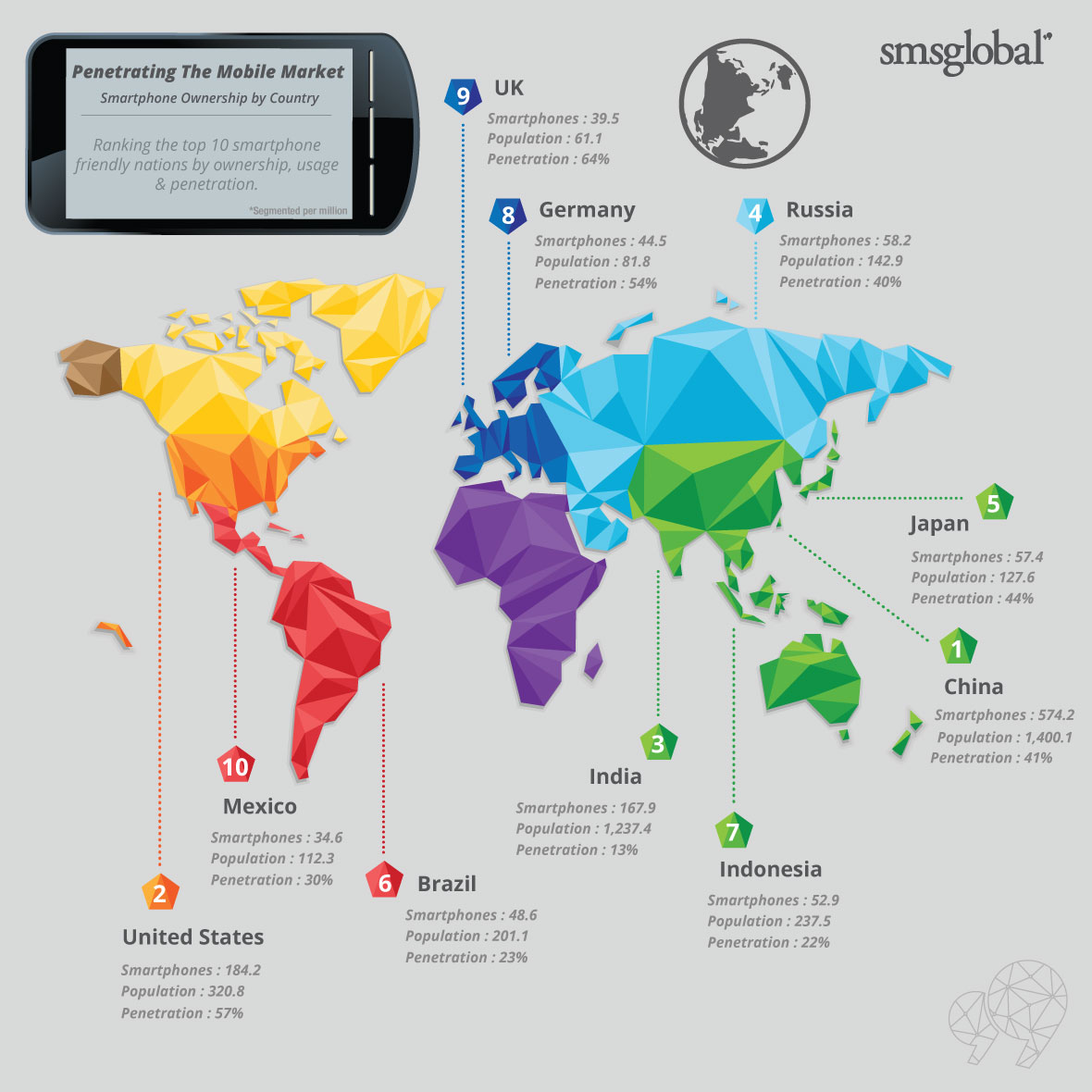A decentralized proof-of-movement ride sharing application, an online notary service provider and an app that enables users to spend bitcoin at any NFC terminals are among few cryptographic concepts which implement the blockchain technology in a new and sometimes startling fashion.
Maximize Decentralization, Improve Efficiency
Bitcoin’s underlying technology, the Blockchain, has entered a new era of mass adoption. The world’s leading financial institutions, banks, technology startups, stock exchanges and multi-billion dollar corporations have begun to implement the blockchain technology onto their existing platforms to maximize decentralization and improve their efficiency.
The exponential growth of the blockchain technology coincides with the massive advancement in smartphone adoption. Since early 2014, as emerging new generation smartphone manufacturers in China and the Southeast Asian region began to offer affordable smartphones that are nearly 90% than premium smartphones in the market, the smartphone adoption rate in both developed and developing economies have increase at an explosive rate.

According to the GSMA mobile economy report, the smartphone adoption rate of European countries reach around 50~60% on average and even the developing countries in the Southeast Asian region recorded nearly 20% smartphone adoption rate in 2015.
Digital currency, technology and blockchain startups quickly took advantage of this massive growth of smartphone adoption rate and have begun to introduce mainstream applications developed using the blockchain technology. One of the most popular and highly anticipated blockchain applications is the decentralized ride sharing application, La’Zooz.
La’Zooz
Since its launch in September 2015, La’Zooz, the decentralized proof-of-movement ride sharing application has been praised by the cryptocurrency community for its implementation of the blockchain technology in developing a hybrid application for mainstream users.
The startup combined the successful model behind the US$51 billion ridesharing application Uber with its own unique mining protocol which incentivizes early adopters better than later adopters to encourage users to join at early stages. The La’Zooz team also introduced a new cryptographic concept called proof of movement, which enables users to earn La’Zooz tokens while driving.
“From the beginning, irrespective of the obstacle in ridesharing, we wanted to do things differently in terms of our own operations. But when we began to understand the difficulty of establishing enough of a critical mass of users to have a working system, we found that doing things differently could be a solution to that problem,” said La’Zooz co-founder Matan Field in an interview.
Uproov
Another startup that introduced a new cryptographic concept and a unique implementation of the blockchain technology is the online notary service provider Uproov. Developed by an Australian startup called Ledger Assets Pty Ltd, the notary application utilizes the blockchain technology to store various forms of data including photos, videos and audio recordings on a distributed ledger as irrefutable and unalterable mobile proof.
Freelancers and digital content providers in specific have always struggled to verify and validate their works online. By using the Uproov platform however, digital content providers such as artists can prove their work on a transparent distributed ledger securely, with low costs.
BTCJam and Plutus.it
While startups like Uproov and La’Zooz gear towards a unique implementation of the blockchain technology, bitcoin startups such as Plutus.it focus on the development of products that introduce bitcoin to mainstream users. Plutus is a bitcoin application that enables users to spend bitcoin at any NFC terminals. This means that by 2016, users will be able use bitcoin to purchase products or services at almost all stores and merchants that accept credit or debit cards. With the emergence of bitcoin debit cards and NFC payment applications, startups like Plutus takes bitcoin one step closer to mainstream users.
